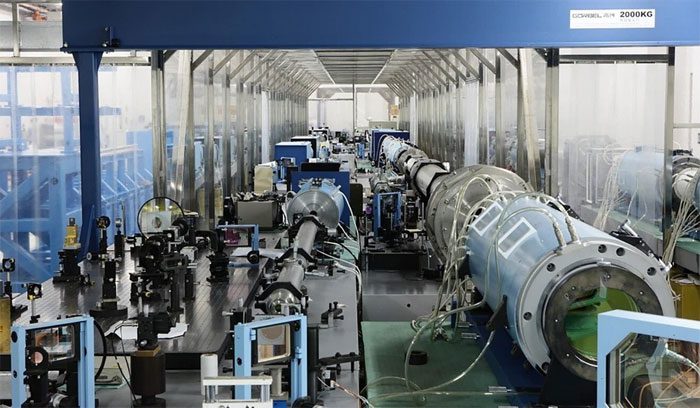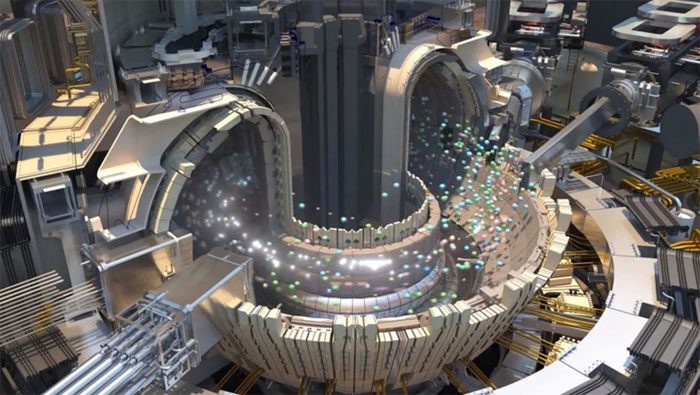China is demonstrating a significant commitment to the field of nuclear fusion energy.
At a facility in Shanghai, the size of a football field, Chinese scientists are firing powerful laser beams at a pair of small gold cones in an effort to replicate the nuclear fusion process that occurs in the core of the Sun.
The cones, as small as pencil tips, have narrow ends pointing towards each other and emit hydrogen plasma. When two streams of hot gas collide at the right time and place, in the correct manner, they will trigger a fusion reaction – a process that could ultimately provide a sustainable and limitless energy source.
2026: Will China’s Fusion Energy Transform?
With government funding of up to 1 billion yuan (approximately 3.5 trillion VND) over six years, research team leader Zhang Zhe and colleagues from the Institute of Physics at the Chinese Academy of Sciences in Beijing have been conducting unprecedented experiments at the Shenguang II laser facility in Shanghai since the summer of 2020.
So far, the research team has conducted three experiments, with another scheduled for December 2021, facing some unexpected challenges. However, initial results indicate that the theory works, and part of the findings was published last week in the journal Acta Physica Sinica.
“Our goal is to achieve sustainable fusion,” Zhang stated in a phone interview on November 9.

Shenguang II Laser Facility in Shanghai, where Chinese scientists are researching fusion energy. (Photo: Handout).
The race for fusion power heated up in August 2021 when researchers at the U.S. National Ignition Facility (NIF) – part of the Lawrence Livermore National Laboratory in Livermore, California – achieved an energy output eight times greater than before.
This breakthrough has brought hope and increased pressure on research teams in other countries, including China.
The NIF experiment aims at directing over 100 powerful laser beams at a single target, using some of the largest laser generators on Earth, creating enough heat to warp mirrors but also reducing precision after multiple shots.
In China, researchers are seeking a cheaper, simpler way to achieve fusion using less powerful laser beams. One outcome is the double-cone ignition scheme developed in 1997 by Zhang Jie, a leading Chinese physicist and former president of Shanghai Jiao Tong University.
“We are making progress step by step. By 2026, a new generation of large-scale laser facilities will be completed in China. We will elevate this facility to a new level,” team leader Zhang Zhe said.
A nuclear fusion scientist based in Beijing noted that the budget for research in Shanghai is small compared to investments in other fusion projects. For example, the world’s largest fusion research project, the International Thermonuclear Experimental Reactor (ITER) in southern France, is estimated to cost between $45 billion and $65 billion.

International Thermonuclear Experimental Reactor (ITER) in southern France.
The idea of creating an artificial Sun to generate a clean, limitless, and massive energy supply has existed for decades, and scientists have proposed various approaches that sometimes compete for resources and attention.
ITER employs the largest candidate for the laser approach (also known as inertial confinement fusion), Tokamak – a device that can create and trap hot gas with extremely strong magnetic fields for fusion reactions to occur inside.
“The double-cone scheme is a brilliant idea. Tokamak is often considered more suitable for large-scale electricity production, but some recent breakthroughs in laser experiments suggest that this approach could be a serious contender,” a researcher who wished to remain anonymous due to professional confidentiality suggested.
“It’s difficult to predict which approach or which country will win the fusion energy race at this stage. There are still too many uncertainties ahead. But ultimately, different technologies and countries may need to unite to bring fusion from dream to reality.”



















































